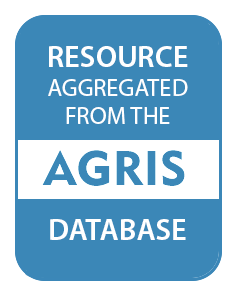What is AGRIS?
AGRIS (International System for Agricultural Science and Technology) is a global public database providing access to bibliographic information on agricultural science and technology. The database is maintained by CIARD, and its content is provided by participating institutions from all around the globe that form the network of AGRIS centers (find out more here). One of the main objectives of AGRIS is to improve the access and exchange of information serving the information-related needs of developed and developing countries on a partnership basis.
AGRIS contains over 8 million bibliographic references on agricultural research and technology & links to related data resources on the Web, like DBPedia, World Bank, Nature, FAO Fisheries and FAO Country profiles.
More specifically
AGRIS is at the same time:
A collaborative network of more than 150 institutions from 65 countries, maintained by FAO of the UN, promoting free access to agricultural information.
A multilingual bibliographic database for agricultural science, fuelled by the AGRIS network, containing records largely enhanced with AGROVOC, FAO’s multilingual thesaurus covering all areas of interest to FAO, including food, nutrition, agriculture, fisheries, forestry, environment etc.
A mash-up Web application that links the AGRIS knowledge to related Web resources using the Linked Open Data methodology to provide as much information as possible about a topic within the agricultural domain.
Opening up & enriching information on agricultural research
AGRIS’ mission is to improve the accessibility of agricultural information available on the Web by:
- Maintaining and enhancing AGRIS, a bibliographic repository for repositories related to agricultural research.
- Promoting the exchange of common standards and methodologies for bibliographic information.
- Enriching the AGRIS knowledge by linking it to other relevant resources on the Web.
AGRIS is also part of the CIARD initiative, in which CGIAR, GFAR and FAO collaborate in order to create a community for efficient knowledge sharing in agricultural research and development.
AGRIS covers the wide range of subjects related to agriculture, including forestry, animal husbandry, aquatic sciences and fisheries, human nutrition, and extension. Its content includes unique grey literature such as unpublished scientific and technical reports, theses, conference papers, government publications, and more. A growing number (around 20%) of bibliographical records have a corresponding full text document on the Web which can easily be retrieved by Google.
Members:
Resources
Displaying 3081 - 3085 of 9579procedure to obtain a refined European land use/cover map
Available land use/cover maps differ in their spatial extent and in their thematic, spatial, and temporal resolutions. Due to the costs of producing such maps, there is usually a trade-off between spatial extent and resolution. The only European-wide, consistent, and multi-temporal land use/cover dataset available is the CORINE Land Cover (CLC) map. Despite the value and usefulness of CLC, its minimum mapping unit (MMU) of 25 hectares considerably limits its applications at large scales of analysis.
Quantifying long-term changes in gully networks and volumes in dryland environments: The case of Northern Ethiopia
Understanding historical and present gully development is essential when addressing the causes and consequences of land degradation, especially in vulnerable dryland environments. For Northern Ethiopia, several studies exist on the severity of gully erosion, yet few have quantified gully development. In this study, gully network and volume development were quantified over the period 1963–2010 for an area of 123km², representing the regional variability in environmental characteristics. Gully networks were mapped from small-scale aerial photographs and high-resolution satellite images.
Groundwater recharge and exploitative potential zone mapping using GIS and GOD techniques
Two-thirds of the total area of Taiwan is mountainous terrain, which is the main groundwater recharge source of the plains region. This study assesses groundwater recharge and exploitative potential zone in the central division of the mountain areas of Taiwan (the middle reaches of the Jhuoshuei River Basin). Basic information from remote sensing and a satellite phantom is collected to set up the basic data maps using elevation, Formosa-II images, the Normalized Difference Vegetation Index, drainage distribution, slope, aspect ratio, lineament distribution, and land cover.
Using self-organizing maps to investigate environmental factors regulating colony size and breeding success of the White Stork (Ciconia ciconia)
We studied variations in the size of breeding colonies and in breeding performance of White Storks Ciconia ciconia in 2006–2008 in north-east Algeria. Each colony site was characterized using 12 environmental variables describing the physical environment, land-cover categories, and human activities, and by three demographic parameters: the number of breeding pairs, the number of pairs with chicks, and the number of fledged chicks per pair.
Farmers’ livelihood assets and adoption of sustainable land management practices in north-western highlands of Ethiopia
In Ethiopia, farmers’ adoption and continued use of introduced land management technologies have not been widespread to reduce soil erosion and soil fertility depletion to an acceptable level. An important set of factors in farmers’ use of improved agricultural technologies is generally known to be their possession of livelihood assets. This study examines the influence of ownership of livelihood assets in farmers’ decisions to use cattle manure as land improvement technology, which is currently being promoted by Ethiopia’s agricultural extension system.


